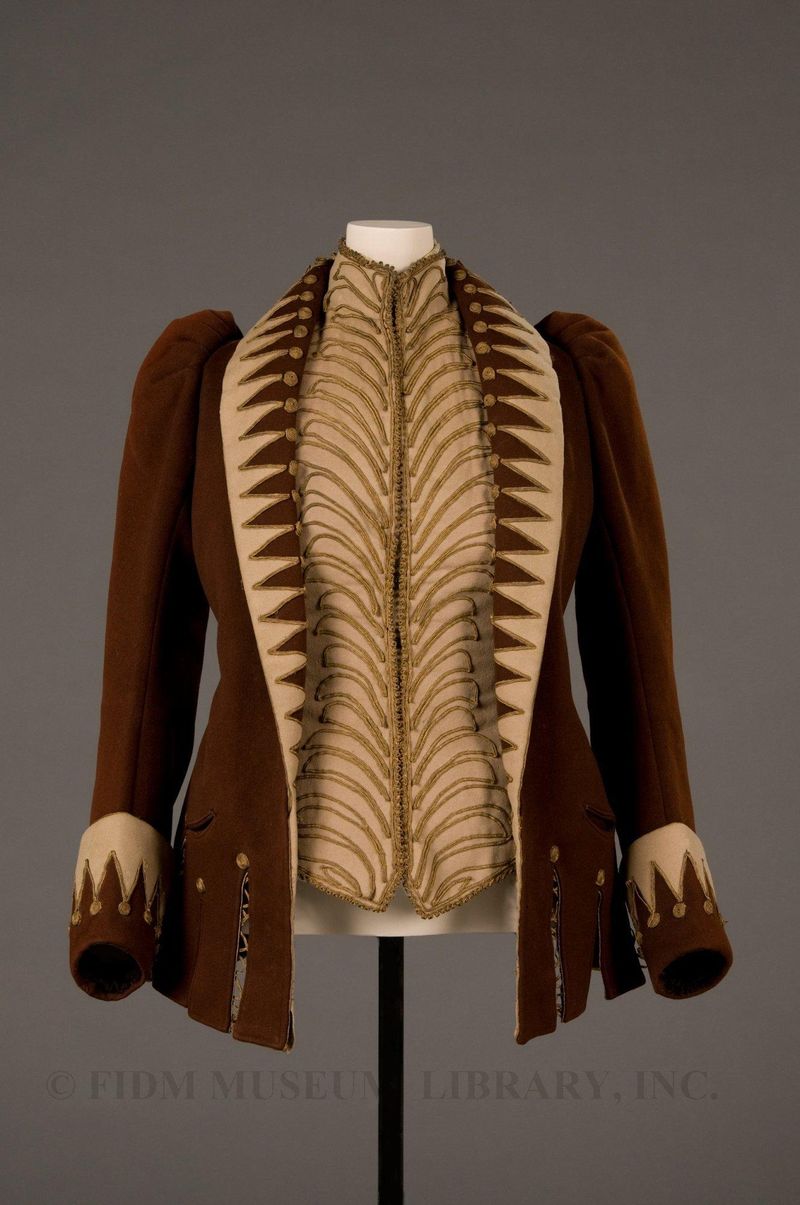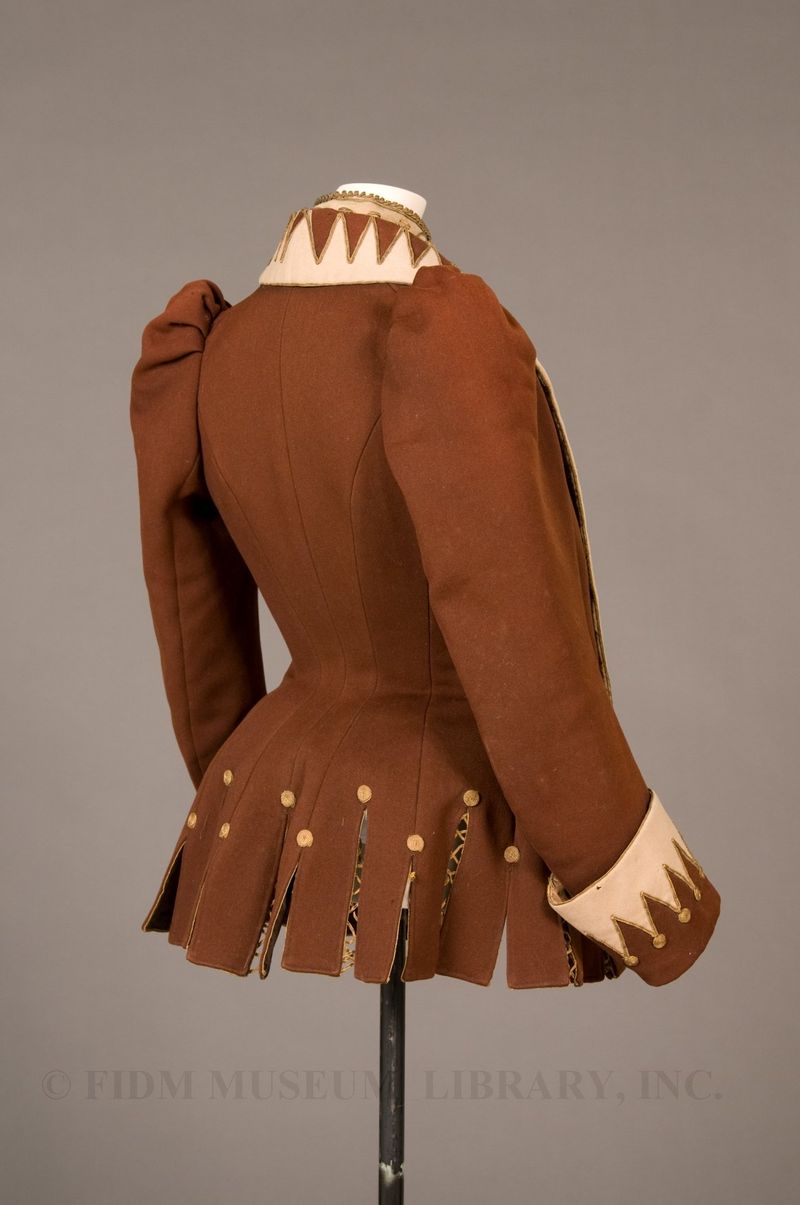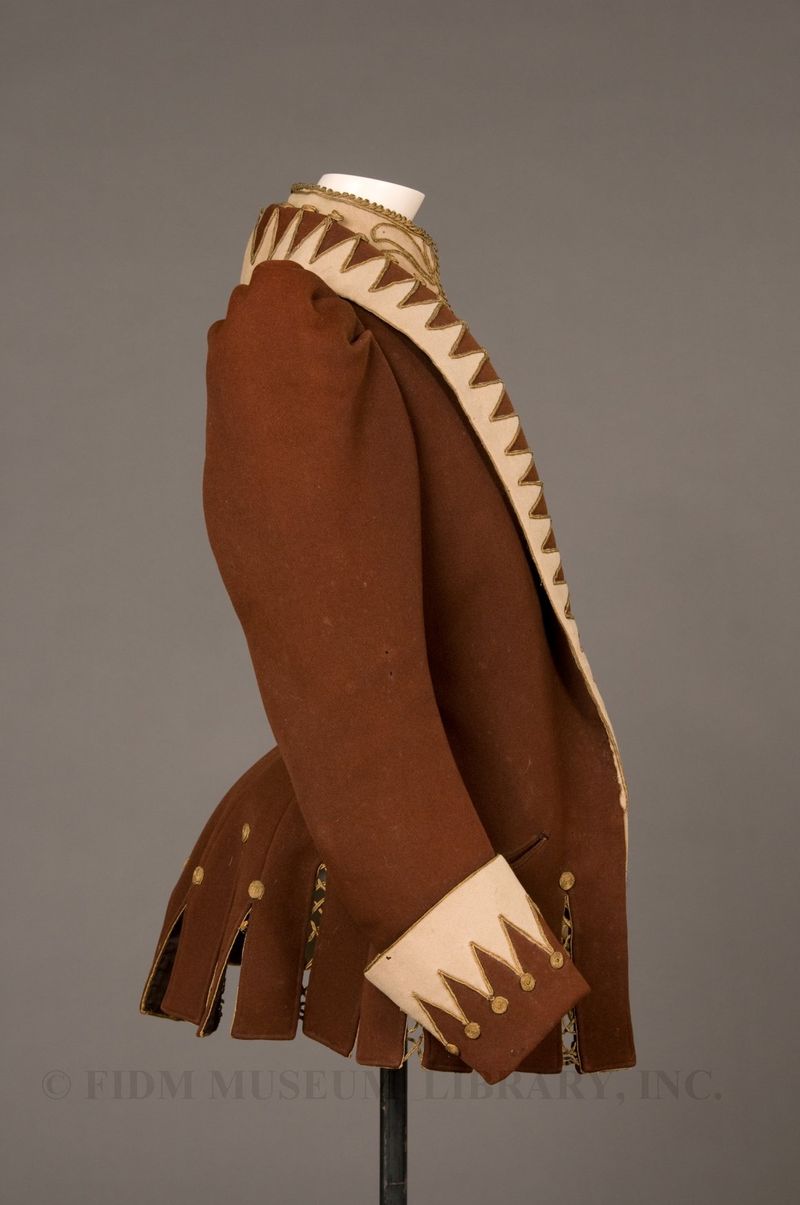Military inspired fashion has been getting a lot of attention lately. March 2010 issues of Harper’s Bazaar and Vogue (both American and British) feature fashion editorials focusing on garments in khaki and shades of olive, while a recent New York Times article also describes the trend. When examining the accompanying images, its clear that designers are primarily referencing 20th century military uniforms, which were designed in a variety of drab colors to make pinpointing a particular soldier difficult. Though solid color uniforms have been largely replaced by sophisticated camouflage patterns, the iconic military uniform is still a solid khaki or green.
Military uniforms haven’t always been so sedate. Prior to about 1850, military uniforms were often elaborate affairs, featuring extensive embellishments and accessories. Ironically, the most elaborate uniforms were typically seen in times of peace, as functionality was less of a concern. Some of the more visually distinct elements found their way into feminine fashions. The FIDM Museum wool jacket below features gold braid and a high collar, elements commonly seen in these more fantastic uniforms.
1891-92
Gift of Steven Porterfield
S2008.897.2
Though dating from the period when military uniforms had become much plainer, dress uniforms still featured non-functional trim, along with colorful insignias designating rank. At the same time, women’s fashion was beginning to demonstrate more functionality, due to an increased interest in sports. To facilitate greater ease of movement, clothing for women began to borrow elements of menswear. Suits, consisting of a skirt, jacket and vest or waist (blouse) were commonly worn by women. Like suits for men, these were often made of practical, functional wool, though still displayed purely decorative trim.
This particular jacket features a mock vest front, a clear homage to masculine dress. The high-collar, sometimes referred to as an officer’s collar, is also borrowed from menswear. It was extremely fashionable around 1891, with The Ladies’ Home Journal going so far as to dictate that permitting “one’s neck to show in daytime is bad form.”1 The small gold “buttons” seen on the back and front are actually small coils of the same gold braid that decorates the front. An 1892 article from the New York Times describes a similar jacket with small gold buttons showcasing the “American eagle,” noting that the emblem is so popular “that coats thus decorated will be sure to find buyers.”2
Unlike the other elements of this jacket, the upward shoulder puff was unique to feminine fashion. Throughout the 1890s, this puff would widen and slide to the upper arms, creating a broad silhouette. At this stage, however, the puffs resemble another easily recognizable aspect of military uniforms, the epaulet.
1 Quoted in Severa, Joan L. Dressed for the Photographer: Ordinary Americans and Fashion, 1840-1900 Ohio: Kent State Press, 1995: 457.
2 “Cloth Coats and Capes.” New York Times 24 April 1892: 12.





The thing that always strikes me about the items you post is how amazingly detailed they are. It seems that today’s fashions typically lack pride of craftsmanship. Everything seems so thrown together now, whereas past designers, seamstresses, tailors…they all spent time perfecting details. I realize this probably just reflects that the world’s population has grown immensely. We have a quick-and-cheap-fashion-for-the-masses mentality that precludes fine painstaking detail work and that makes me sad. This jacket is lovely. The style is perhaps not something a young woman would wear today, but the artistry is timeless. I wish that part of it had traveled to 2010.
Agreed! You’ve pinpointed the throwaway nature of most contemporary clothing.There are certainly garments available that demonstrate the detail that you discuss, but they’re a bit outside the realm of possibility for most of us.
Though the reasons are many, I been thinking more lately about the role of the consumer in this downgrading of quality. We expect things to be cheap and also expect that items will only be worn for a season or two. By demanding the lowest price, we also guarantee inferior textiles and careless construction. How to get out of this cycle??
Some of current day fashion definitely takes it’s cues from military attire. The beret for example is being worn by celebrities such as Fergie and Cameron.
If you look at dress uniforms still in the military, many are so old fashioned that it just doesn’t make sense anymore (23 buttons on the navy dress blue’s?).